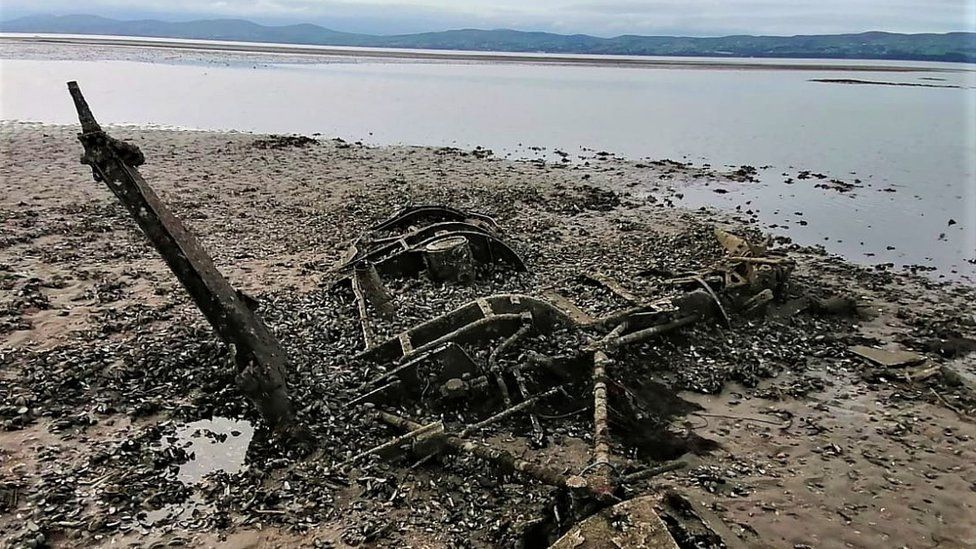 DAERA
DAERAThe wreck of a Royal Navy helicopter which came down in Lough Foyle more than 60 years ago has been found by researchers mapping Northern Ireland’s coast.
The Royal Navy Westland Dragonfly crashed into the lough during a recovery exercise on 25 November 1958.
It was discovered earlier in the year by researchers working on a 3D coastal survey of Northern Ireland.
The wreck’s exact whereabouts have not been revealed.
The coastal survey was commissioned by Stormont’s Department of Department of Agriculture, Environment and Rural Affairs (Daera).
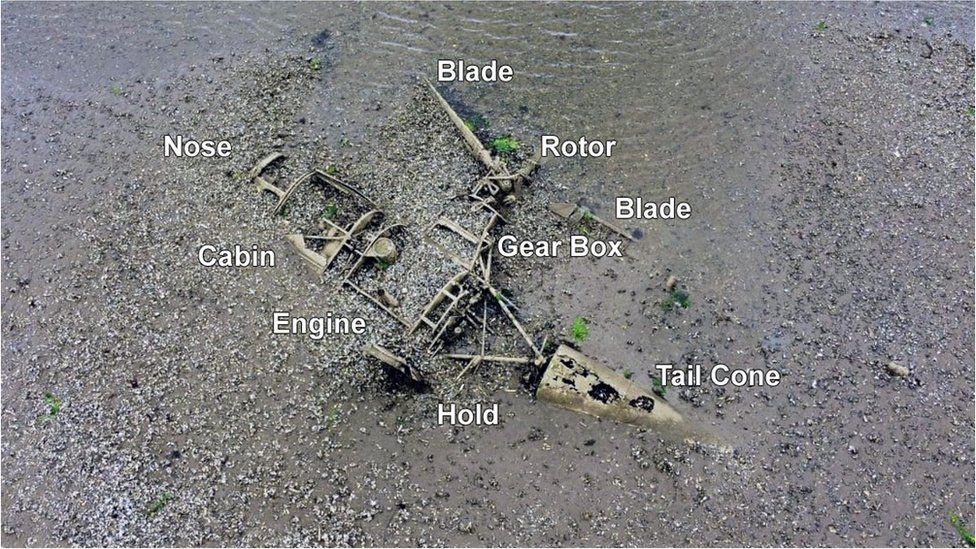
A Daera spokeswoman said the discovery of the helicopter was an unexpected find.
“Remnants of aircraft structure were initially spotted in the aerial photos of Lough Foyle,” she said.
“Further physical inspection of the site revealed the wreck of a very early form of helicopter, lying on its starboard side on a gravelly bank”.
“The exact position of the wreck is not being released as the crash site is located on dangerous soft sediment and a significant number of potentially live World War Two and post-war ordnance surround the site”.
The department said that despite being heavily corroded, the frame of the helicopter and its three rotor blades remain mostly intact.
It still carries stencilling of the words “Royal Navy” on its tail boom.
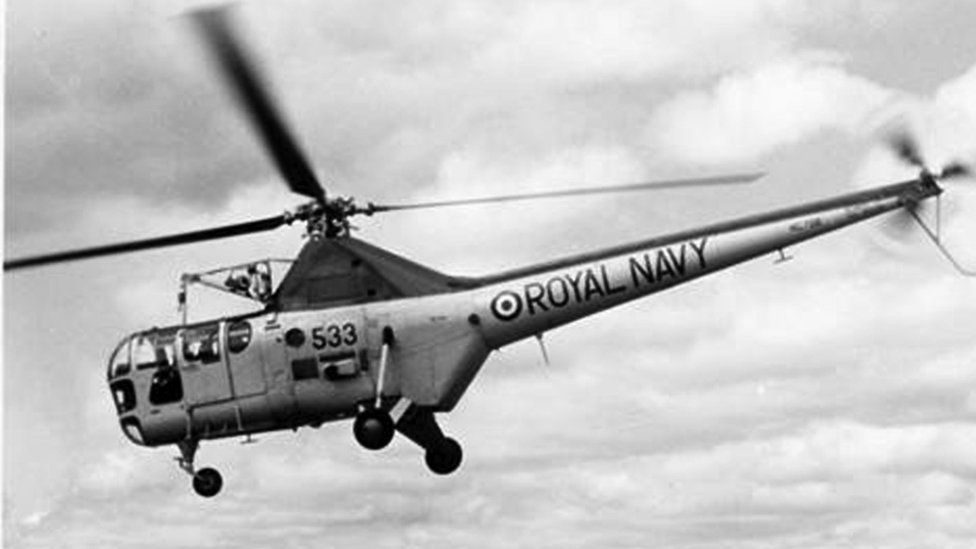
The chopper was carrying two crew members – a pilot and an observer – when it came down, the Belfast Telegraph of 25 November 1958 reported.
“The aircraft came down a couple of yards from the County Derry shore and the crew were picked up from the mudbank by a rowing boat sent out by the station authorities,” the newspaper reported.
‘Came down in the mud’
The helicopter crew, from nearby Eglinton Naval Air Station – now City of Derry Airport – had “sighted a metal object, possibly a piece of aircraft, on the mudbank, and hovered low in an attempt to recover it by hook and cable,” the Telegraph said.
However, the object proved too heavy for the helicopter to lift and it “came down in the mud”.
In the following day’s edition, the Belfast Telegraph quoted a Naval Air Station spokesman who said the wreck was to be abandoned as it would not be possible to get a salvage vessel close enough to it.
Its “secret radar equipment”, however, was to be recovered.
The newspaper also reported that the helicopter was one of two search and rescue helicopters based at Eglinton “that have taken part in many mercy missions around the Irish coasts”.
-
The medieval-era boats hiding in the River Foyle
-
27 March
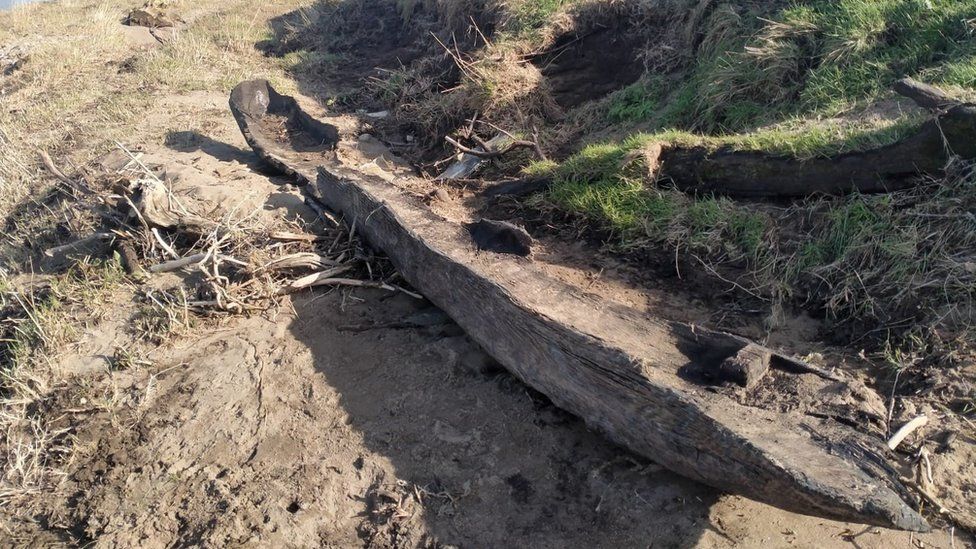
-
-
Lough Foyle WWII plane ‘should be salvaged’
-
29 November 2018
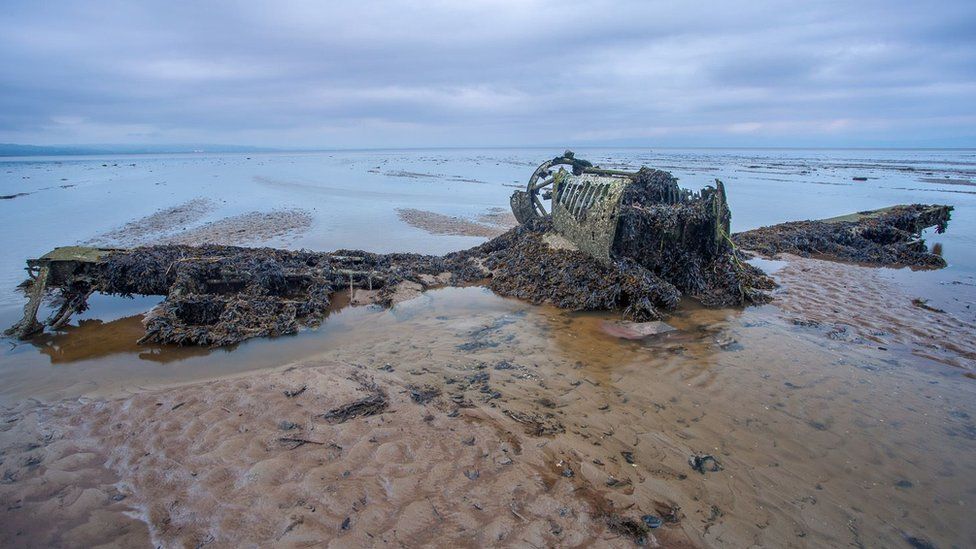
-
-
WW2 ‘allied’ bomb found in Lough Foyle
-
13 September 2018
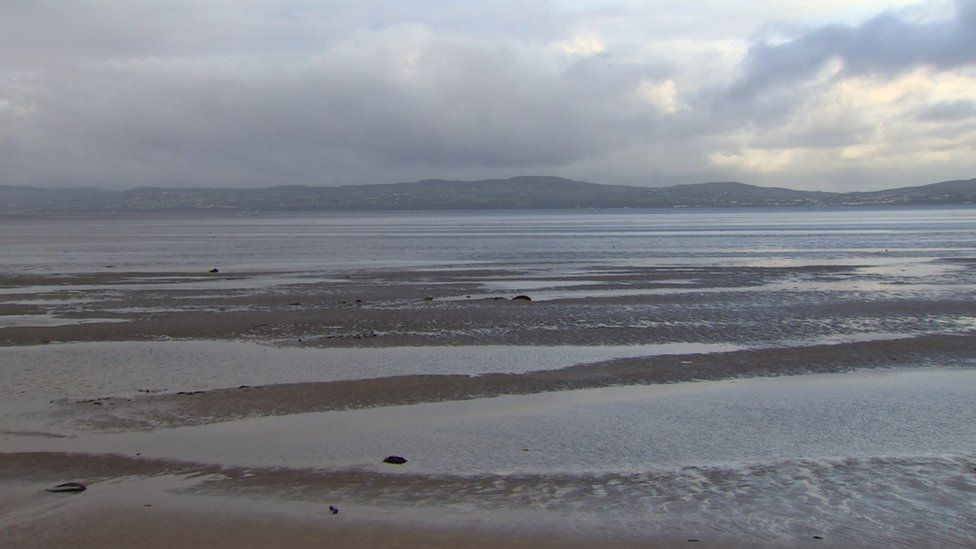
-
